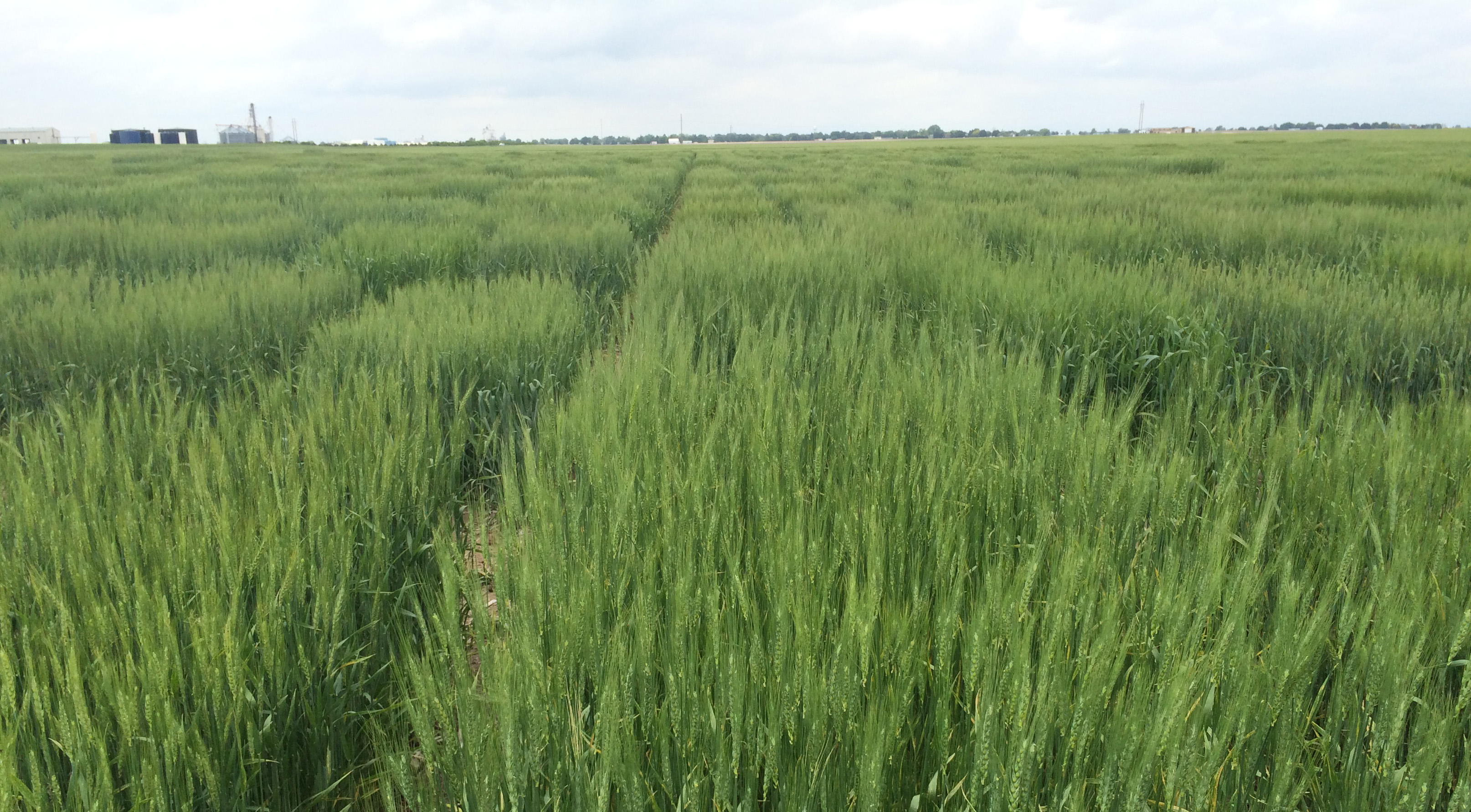Wheat Resistance Shifts

Wheat Rust Resistances Shift in 2015
Sept. 2, 2015The most important winter wheat varietal news from 2015 was a major change in the virulence of stripe rust (yellow rust). Many previously resistant varieties became susceptible and many that were previously susceptible were shown to be truly susceptible. Most notable were Wesley and Overland, both of which had good levels of resistance, but became susceptible this year.
When selecting varieties for planting this fall, be sure to check this year's disease data to see if your variety has lost its resistance. (See stripe rust resistance ratings by UNL Wheat Pathologist Stephen Wegulo in Winter Wheat Varieties for the Nebraska Panhandle.) If it has and you still like its other characteristics, consider using a fungicide to control the disease. Fungicides were extremely valuable in Nebraska in 2015. In one of my nurseries, the untreated plots averaged 29 bu/ac while the treated plots averaged 52 bu/ac. A difference of 23 bu/ac paid many times over for the cost of the fungicide treatments. Fungicides also greatly helped improve test weight.
The good news is that despite a major virulence change, some varieties still have pretty good resistance. For example the recently released line, Freeman, held up very well against stripe rust. Similarly Robidoux, which may appear to be susceptible, seems to have an adult plant resistance. The best way to think about Robidoux's resistance is that if the leaves become infected, the infection site will die (hypersensitivity). Because the infection site is dead, the pathogen does not live long enough to sporulate (the stage when you see the rust like structures that turn your clothes yellow-orange). Other varieties with good stripe rust resistance include Kanmark, 1863, SY Wolf, SY Southwind, T158, and Westbred Cedar.
New UNL Wheat, Small Grains on the Horizon
No new winter wheat varieties were released by UNL in 2014-2015, but one line — NE10589 — is under consideration. NE10589 is derived from the cross OK98697/Jagalene/Camelot. It has good test weight, is a taller semi-dwarf with medium late maturity. It is resistant to susceptible to Hessian fly, moderately resistant to stem, leaf, and stripe rust and bacterial streak. By markers, it may have the Lr37/Sr38/Yr17 translocation which is also found in Freeman and most likely gives both lines their stripe rust resistance as well as resistance to stem rust. The leaf rust resistance gene no longer seems to be effective.
NE10589 was tested in the 2014 and 2015 State Variety Trials and seems to be very broadly adapted in Nebraska. It was selected using phenotypic and genomic selection. This is a favorite line by yield and genomic selection. In considering its yield and test weight, in head-to-head comparisons with released varieties and with advanced experimental lines that are under consideration for release, it was the best yielding line in my program. That NE10589 has good stripe rust resistance is an added benefit, especially in years like this year.
Though this article is about winter wheat, it should be noted that two winter barley experimental lines and a number of winter triticale experimental lines are also under consideration for release or licensing. Small grains growers and those interested in cover crops or forage and hay crops will have numerous choices to select from for their farms.
Stephen Baenziger
UNL Wheat Breeder and Wheat Growers Presidental Chair
Online Master of Science in Agronomy
With a focus on industry applications and research, the online program is designed with maximum flexibility for today's working professionals.
